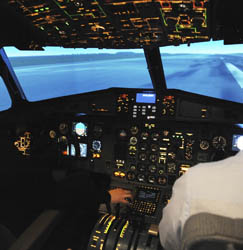Aviation safety training strengthened
Loss of control in flight, often attributed to a lack of crew awareness and experience in recovering from extreme flight conditions, is the most common cause of fatal accidents in aviation. These extreme conditions include aviation 'upsets' such as a high roll angle of more than 45 degrees, where the pilot inadvertently allows the situation to become critical. With plans to make upset recovery training mandatory, the EU is looking at new, effective ways to train pilots in overcoming these potentially fatal events. The EU-funded project 'Simulation of upset recovery in aviation' (SUPRA) worked on advancing flight simulations in upset conditions. As current simulation technology is not capable of such modelling, the project team furthered the state of the art of flight dynamics modelling and motion cueing to address shortcomings in ground-based simulators. SUPRA based its work on previous modelling efforts that involve wind tunnel techniques to predict the behaviour of fighter aircraft in flight using novel computational fluid dynamics. It also developed motion cueing improvements and investigated numerous flight regimes not typically encountered during normal flight operations of commercial aeroplanes. Another important achievement involved the correct replication of physical strain on the human body during an upset using centrifugation as a simulator solution. In effect, SUPRA successfully developed a generic model to capture the key aerodynamic behaviour of transport category aircraft in high incidence flight. It brought in expert test pilots to evaluate the concept and validate its viability. The research was disseminated to stakeholders through the project website and through a symposium that attracted aeroplane manufacturers and operators as well as aviation authorities. Once the technology is exploited to improve pilot flight handling skills, it will help pilots re-establish stable control of the aircraft after upsets. As these incidents count for 10–20 % of fatal accidents in public air transport, this simulation technology will save valuable lives not only in Europe but hopefully across the globe as well.







